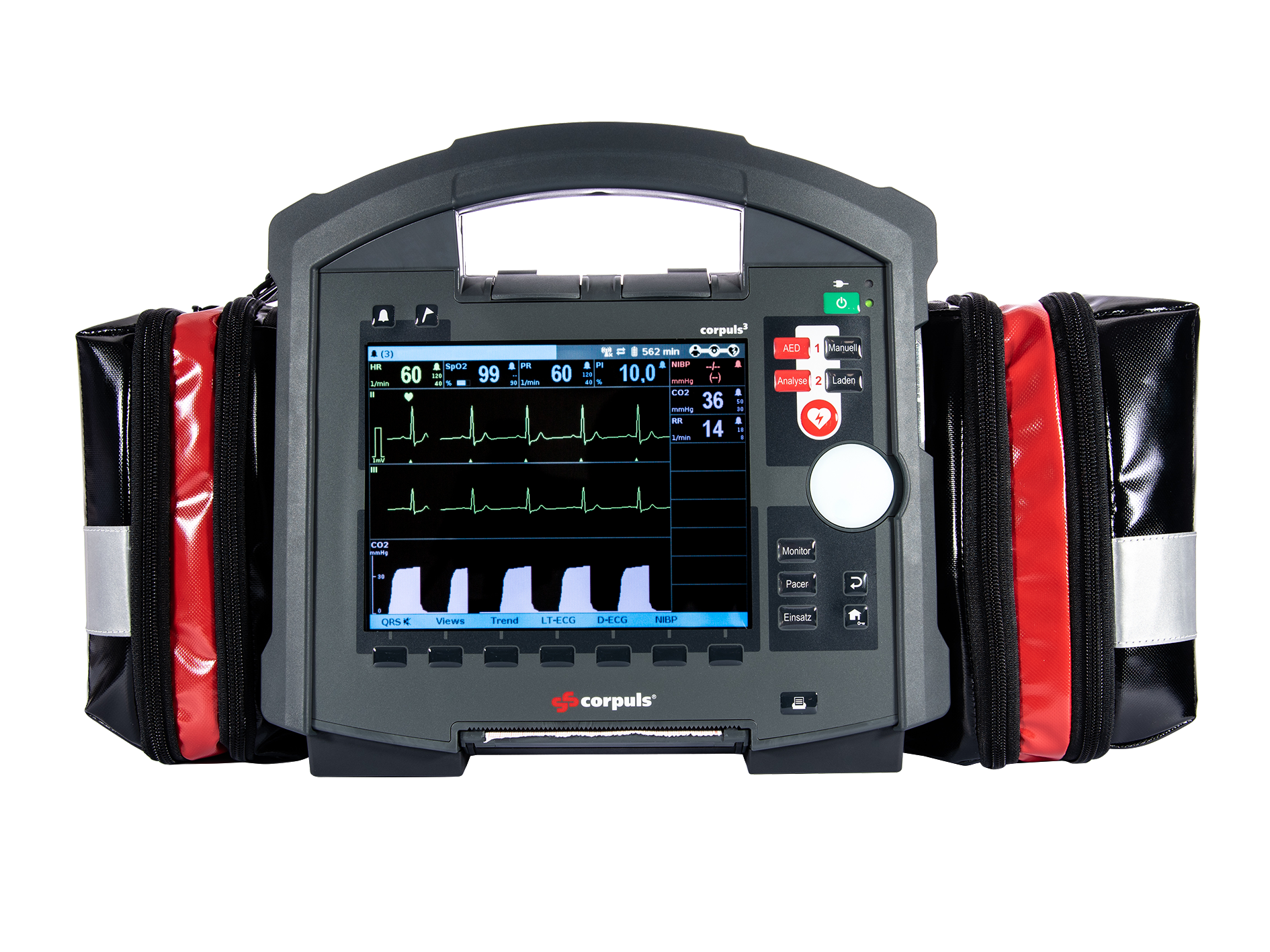
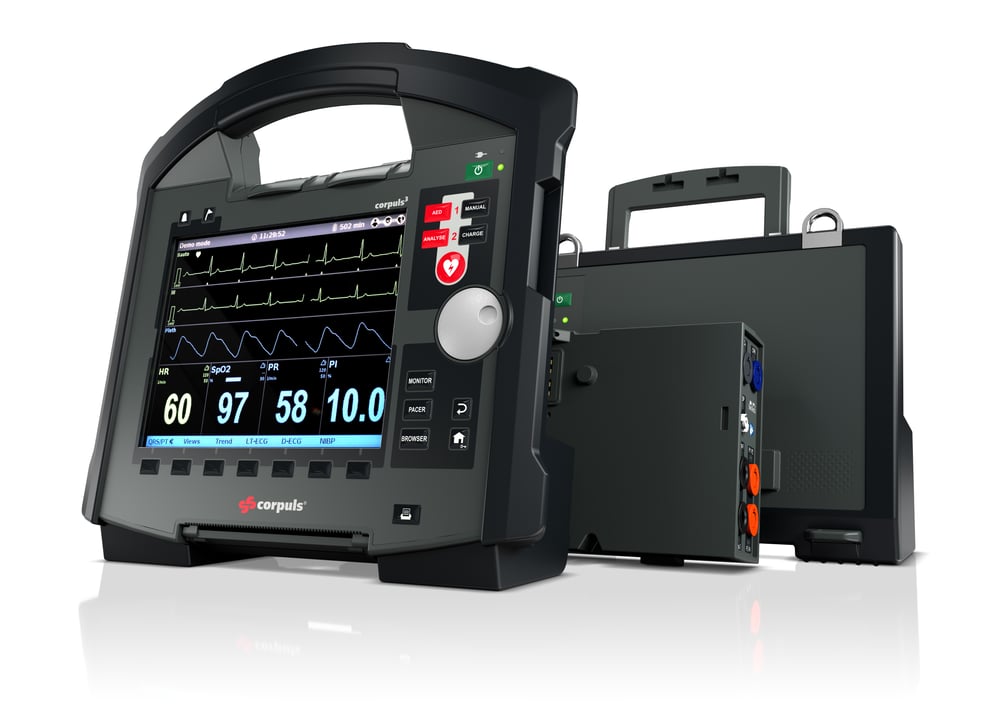
Do more from your seat
95% of functions performed whilst seated and belted
The corpuls3 defibrillator / monitor is a modular device that enhances safety and accessibility.
Unlike traditional single-unit monitors, the corpuls3 can be separated into three wirelessly connected modules: the Monitor, the Patient Box, and the Defibrillator.
This setup allows paramedics to perform up to 95% of their tasks from the safety of their seat.
Watch our brand new animation to learn how the corpuls3 can help keep ambulance staff, and patients #SafeInTheBack
Paramedics in Peril: The Push to Improve Safety Inside Ambulances
Every day, ambulances across the UK are involved in at least one road traffic collision (RTC). While some of these incidents result in minor damage, others have led to serious injuries or even fatalities, affecting both paramedics and patients. Despite the risks, a troubling trend has emerged: many ambulance staff are neglecting to wear seat belts while working in the back of these vehicles, raising serious safety concerns.
The Unseen Risk
National ambulance forums have repeatedly sounded the alarm about this issue. The law mandates that everyone in an ambulance must wear a seatbelt, with exceptions only during critical moments of emergency care. However... read more
The Association of Ambulance Chief Executives (AACE) launched a comprehensive survey in 2022, targeting frontline staff across UK ambulance services. The goal was to gather insights into current seat belt usage and to understand the barriers to compliance. The findings were eye-opening:
- Many paramedics were unaware that the driver bears the ultimate responsibility for ensuring that everyone in the vehicle is secured before the journey begins.
- A significant number of staff admitted to not wearing a seatbelt during their most recent ambulance trip.
- A surprisingly low percentage reported wearing a seatbelt throughout the entirety of their last shift.
In response to these finding the AACE has launched the #SafeInTheBack campaign . The initiative aims to increase awareness about the dangers of not wearing seat belts in the back of ambulances and to boost compliance with safety regulations. To learn more about #SafeInTheBack click here.
The AACE have produced this video to raise awareness as part of the #SafeInTheBack campaign that details the importance of staying seated and belted in the back of the Ambulance.
Does your current practise comply with EN1789:2020?
What is the regulation?
EN1789:2020 is a European standard for medical vehicles, which underscores the importance of seatbelt use in ambulances. It mandates that all occupants, including medical staff, patients, and any other passengers, must be secured while the vehicle is in motion. Adherence to this standard is crucial to minimise the risk of injury during a collision and ensuring the safety of everyone on board.
The grey area
The aim is to comply with EN1789:2020 and the statutory requirement / legislation for safe use of seat belts and harnesses in the back of an ambulance. This legislation states that the exemption to this requirement is when a patient requires urgent medical attention.
This exemption is meant to be rare and temporary. Once the immediate care is completed, the staff member is required to buckle up. Yet, compliance with this regulation is inconsistent, putting both paramedics and patients at unnecessary risk.
Our Innovative Solution for Safer Care

The corpuls3 system with its modular design and dedicated mounting options ensures that your Ambulance complies with EN1789:2020 - keeping Ambulance staff SAFE, without compromising on the patient's needs during transport.
Unlike traditional single-unit monitors, the corpuls3 can be separated into three wirelessly connected modules: the Monitor, the Patient Box, and the Defibrillator.



The Safe Working Triangle Do more from your seat
In three simple steps you can create the safe working triangle inside the ambulance by positioning each module optimally on specially designed mounts;
1. Secure the Patient Box to the stretcher
2. Mount the Defibrillator on the trauma wall
3. Mount the Monitoring unit beside the paramedic seat, this allows the Paramedic to interact with the screen from arms length - giving them full control of the scene.
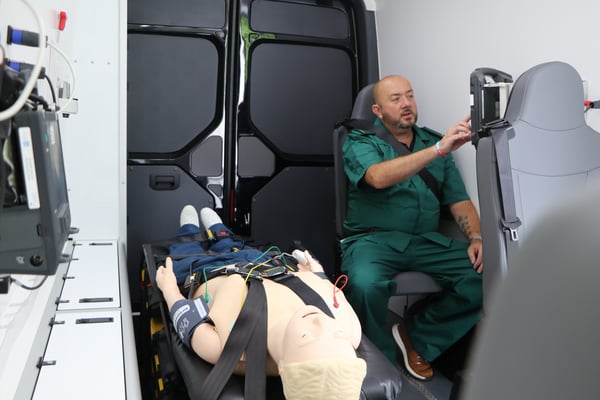
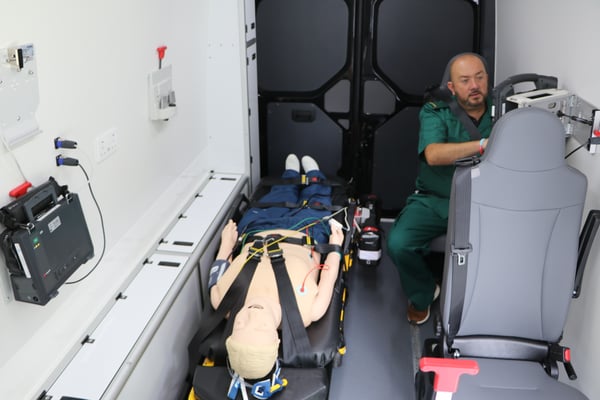
Using the working triangle the following patient monitoring functions can be controlled by the Paramedic from their seat:
• Alter parameters
• Manage alarms
• Perform NIBP
• Print out ECG
• Record events
• Record/access patient data
• Review 12 lead ECG
• Review trends
• Transmit ECG
• Send/ update data between ePCR and corpuls3
This configuration allows Paramedics to stay #SafeInTheBack as they remain seated and belted while performing up to 95% of their tasks from the safety of their seat. This innovative approach not only improves safety but also ensures that paramedics can quickly and effectively respond to patient needs without compromising their own well-being.
There are mounting solutions for all ambulance configurations: Mounts on the wall or floor, with or without swivel mechanism. There are options for safe attachment to the stretchers thanks to the Quick Release Stretcher Mount.

Monitor mount
• Lightweight and shallow mounting depth.
• Also suitable for a combination of monitor and patient box.
• Power supply: 12 Volts DC or 100-250 Volts AC (optional)
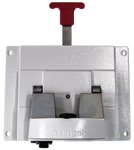
Defib mount
• One-hand handle release
• 10-second auto-locking feature
• Power supply: 12 Volts DC or 100-250 Volts AC (optional)
• Device can also be mounted and charged in compact mode (as 1 unit)
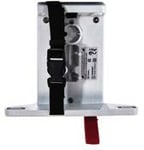
Patient box mount
• For use with the Quick Release Stretcher Mount (QRSM)
• Easy to adapt and reconfigure
• Power supply: 12 Volts DC or 100-250 Volts AC (optional)
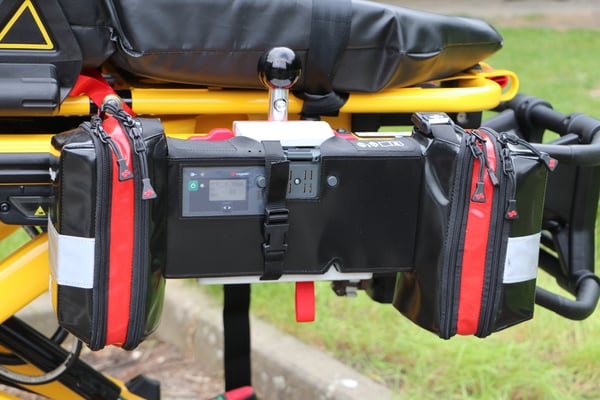
Quick Release Stretcher Mount - Safely mount the patient box to the stretcher
The Quick Release Stretcher Mount (QRSM) has been developed by Ortus specifically for the corpuls3 Patient Box. It is an innovative bracket system that allows paramedics to utilise the full modular functionality of the corpuls3 Defibrillator / Monitor while remaining seated and belted during patient transfers. With the QRSM, paramedics can perform 95% of monitoring from their seat, ensuring both safety and efficiency.
Features:
• The Patient Box remains on the stretcher alongside the patient during transfer. This eliminates cable overstretching, damage and trip hazards in the saloon.
• Quick release attachment to the side rail of ambulance stretchers for restricted access.
• 20-minute retro fit.
• Patented design.
• Reduced muscular skeletal injury when overstretching to secure defibrillator to action wall bracket.
• Full remote control of the corpuls3 from the paramedic seat whilst seated and belted.
Certifications:
• EN1789 compliant
• Crash-tested to 26g
Compatibility:
• Designed to work seamlessly with the corpuls3 Patient Box.
• Compatible with most modern ambulance stretchers.
Want to learn more?
To learn more about our solutions or to schedule a meeting with a member of our friendly business development team, please complete this form. We look forward to connecting with you!
.png?width=571&height=2000&name=Untitled%20design(159).png)
corpuls3 Defibrillator / Monitor Specifications:
- Available in dark grey colour way with Touch Screen monitor - see C3T
- Weight: from 6.5 kg (SLIM, basic configuration).
- Extremely high dust and splash protection (IP55).
- Operation range: –20C to +55C (basic functions: ECG monitoring, defibrillation).
- DIN EN 1789.
- Aviation Standard RTCA DO 160 G.
- US Military Standard MIL-STD-810G.
- Transflective 8.4’’ Display, with opt. touch screen (C3T).
- Control of the corpuls cpr via Bluetooth.
- Integrated 4G modem and WLAN or LAN connection for data transfer/telemedicine.
- ECGmax and CEB – the 22-lead ECG solution from corpuls.


